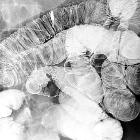MR enteroclysis



MR enteroclysis is an invasive technique for MRI evaluation of the small bowel mostly used in Crohn disease.
Note: This article is intended to outline some general principles of protocol design. The specifics will vary depending on MRI hardware and software, radiologist's and referrer's preference, institutional protocols, patient factors (e.g. allergy), and time constraints.
Indications
MR enteroclysis, similar to MR enterography, is most commonly used to evaluate patients with Crohn disease where it is used for assessment of the primary disease and any complications. Other indications include celiac disease, postoperative adhesions, radiation enteritis, scleroderma, small bowel malignancies, and polyposis syndromes.
Although enteroclysis has been shown to give a better small bowel distention, there are only a few studies directly comparing this method with MR enterography (per os). The choice for one over the other should follow local or institutional guidelines.
Advantages
- compared to CT enterography or enteroclysis
- no ionizing radiation
- excellent soft-tissue contrast resolution
- images can be acquired on customized planes
- compared to MR enterography
- better bowel distention (c.f. MRE)
- reported as having a superior detection of mild small bowel superficial pathology and jejunal disease
Disadvantages
- compared to CT enterography or enteroclysis
- longer scanning time
- more susceptible to motion and breathing artefacts
- MR incompatible implants or devices may preclude the scan
- compared to MR and CT enterography
- nasoenteric intubation can be a very stressful procedure for patients
Technique
Bowel preparation
placement of a nasoduodenal tube under fluoroscopic guidance
- small bowel distension with 1-3 L of methylcellulose (0.5%) and water solution or isosmotic water solution through an electric infusion pump (located outside the scanner room): infusion rate: 80-200 mL/min
Sequences
- MR fluoroscopy using a thick-slab 50-mm coronal HASTE sequence with fat saturation, starting at the beginning of the infusion and repeated every 8 seconds during normal breathing
- subsequently, every 5 minutes, depending on the degree of distention observed from the HASTE images, coronal and axial true fast imaging with steady-state precession (FISP) sequences with fat saturation are performed with a slice thickness of 5 mm to study morphologic changes
- with maximal distention, multislice HASTE images with fat saturation and unenhanced and enhanced (0.1 mmol/kg gadolinium) T1 coronal and axial fast low-angle shot (FLASH) 2D images with fat saturation are obtained 60 seconds after contrast injection
See also
Siehe auch:
- Morbus Crohn
- Enteroklysma
- CT enteroclysis
- dark lumen Technik
- bright lumen Technik
- diffusion weighted imaging in crohn disease
und weiter:

 Assoziationen und Differentialdiagnosen zu MR Sellink:
Assoziationen und Differentialdiagnosen zu MR Sellink:

